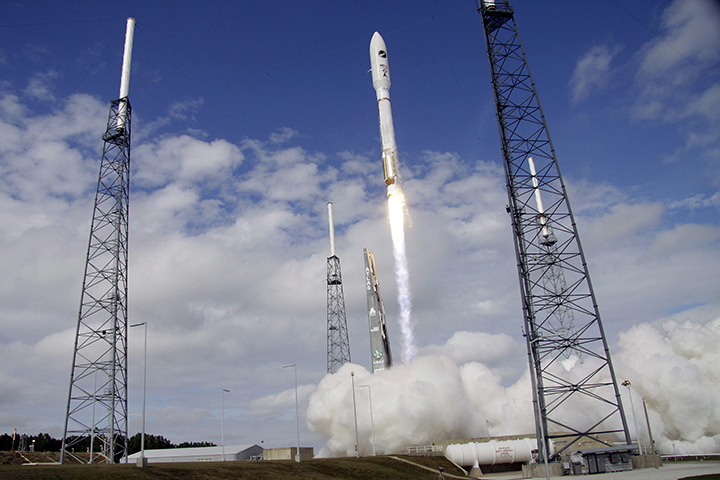LOS ANGELES – What looks like a mini space shuttle, can fly itself for millions of miles and goes by the name X-37B?

Must be a secret space weapon.
Or something to rocket next-generation spy gear into orbit.
Or maybe a decoy to keep China’s military guessing.
READ MORE: Air Force launches mystery mini-shuttle back into space
The purpose of the U.S. military’s space plane is classified, only fueling speculation about why it has been circling Earth for nearly two years on this, the program’s third mission. The plane is expected to land as soon as Wednesday at Vandenberg Air Force Base, about 130 miles northwest of Los Angeles.
Here are some questions, and a few answers, about the X-37B:
Q: OK, it’s all very cloak and dagger. But what do we know about it?
A: The X-37B program has been an orphan of sorts, bouncing since its inception in 1999 between several federal agencies, NASA among them. It now resides under the Air Force’s Rapid Capabilities Office. There are two of these robotic planes, and the one due to land launched on the back of an Atlas V rocket from Cape Canaveral, Florida, on Dec. 11, 2012. It stands 9 1/2 feet tall and is just over 29 feet long, with a wingspan under 15 feet. It weighs 11,000-pounds. And it has solar panels that unfurl to charge its batteries once in orbit.

Get breaking National news
Q: And what don’t we know?
A: Just about everything else. For starters, what it has been doing up in space. Speculation centres on the idea that its relatively small cargo bay was used to ferry sensors that can capture detailed images or communications on Earth – for example to track Iran’s nuclear program, or suspected terrorists. That makes sense to Harvard University astrophysicist Jonathan McDowell, who notes that any device could be returned, allowing scientists to build a better model based on the wear and tear it experienced from the radiation and debris outside the Earth’s atmosphere. Another theory, favoured by veteran space policy analyst John Pike, is that the program is designed to “give the Chinese a brain cootie” trying to figure out what it’s for. Under that thinking, China would have to spend (and waste) time and resources trying to counteract a range of possibilities.
Q: This sounds like perfect fodder for Internet theories. What are some of them?
A: It can grab another nation’s satellites. Or just sidle up and inspect them at close range. Or shadow China’s space lab. McDowell and Pike say none of these is likely.
Q: What is the Air Force saying about this mission?
A: Not much, other than that the craft will land soon (the exact timing depends on “technical and weather considerations”) and that crews at Vandenberg are well-trained for when it touches down.







Comments